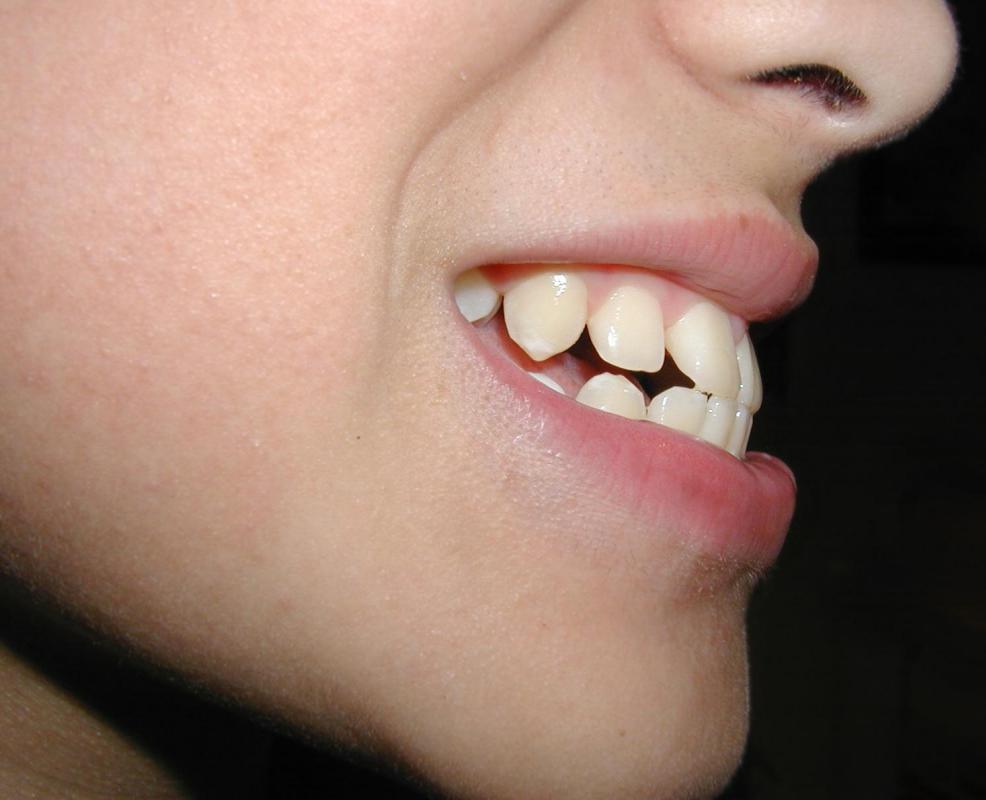At WiseGEEK, we're committed to delivering accurate, trustworthy information. Our expert-authored content is rigorously fact-checked and sourced from credible authorities. Discover how we uphold the highest standards in providing you with reliable knowledge.
What is Orthodontia?
Orthodontia, also known as orthodontics, is a specialty within the field of dentistry that focuses on straightening misaligned teeth and malocclusion. Treating malocclusion, or problems with the bite, is usually accomplished through the use of braces. Another focus of orthodontia is to make a person's smile more attractive by fixing crooked teeth. This involves correcting large gaps and making sure that the teeth are properly aligned with the lips. Orthodontia sometimes involves surgery to improve the shape of the jaw.
The focus of orthodontia is on straightening teeth for both functional and cosmetic purposes. After children lose their baby teeth, their adult teeth grow in, but often they grow in at angles that cause problems with biting and chewing. Crooked teeth can also result in problems with spacing between the teeth, making dental hygiene more difficult. Another condition that orthodontics seeks to fix is when the upper jaw and the lower jaw differ in size, resulting in overbite or underbite. Orthodontic treatment is most effective when started early in life, though many adults also seek orthodontic care.

Sometimes tooth misalignment is so mild that a patient only needs to wear a removable device called a retainer on the teeth. Braces, however, are the most commonly used orthodontic tools. Over time, through the use of constant pressure and regular adjustments that are made by an orthodontist, braces work to shift teeth into alignment. The length of time braces are worn depends on the individual patient and his or her teeth but can vary from six months to several years. After the braces are removed, a retainer is usually worn to help maintain and stabilize the new position of the teeth.

Orthodontia involves several kinds of braces, and the type chosen depends on the individual patient and his or her needs and preferences. Some braces are metal and attach with glue to the outside of each tooth, while other metal braces wrap around each tooth. Ceramic braces that match the color of the teeth are available. Some people prefer braces that attach themselves to the inside surface of each tooth. Rubber bands are often used with braces to exert extra pressure on particular teeth.
In rare cases, orthodontia might involve the wearing of head gear or neck gear, which helps straighten and align both the teeth and the jaw. This gear is worn on the head or neck and attaches to the teeth with wires. Head gear and neck gear are usually worn only at night. Orthodontia sometimes involves surgery to correct jaw problems. In orthodontic surgery, the jaw bone is reshaped to help correct malocclusion, overbite or underbite.
AS FEATURED ON:
AS FEATURED ON:












Discuss this Article
Post your comments